Anatomy of an enquiry, part 2: historical firsts
This is the second part of a blog series about Special Collections’ remote enquiry service, and the types of questions we answer using collections material.
Enquiries about historical alumni are one of the most popular we receive through our remote enquiry service. Less commonly, however, they come with an additional challenge that can make them less straightforward to answer. Such was the case when we were contacted by the great nephew of early 20th century alumna Rachel Benjamin Verulkar. In addition to seeking information about her studies, he was hoping to confirm the family story that Rachel, from Pune, India, was the first woman from her country to study abroad.
While the full extent of this question was, of course, a little beyond our scope, queries about St Andrews University’s historical ‘firsts’ do come up occasionally, and can be notoriously tricky to answer. Some of our historical alumni information is now available to view online through the digitisation of the Biographical Register of the University of St Andrews 1747-1897. However, there is no computer database that collates all 600 years of the University’s pre-21st century student records; they are held in physical volumes. This means there is no quick and easy ‘catch-all’ method for conducting a search. And of course, historical records are much less detailed than our modern student files; evidence of some of our earliest students, for example, exists solely as signatures on the University’s matriculation and graduation rolls. So in some cases, we might simply be unable to prove or disprove a theory based on the limited information that is available. But we will endeavour to do what we can!
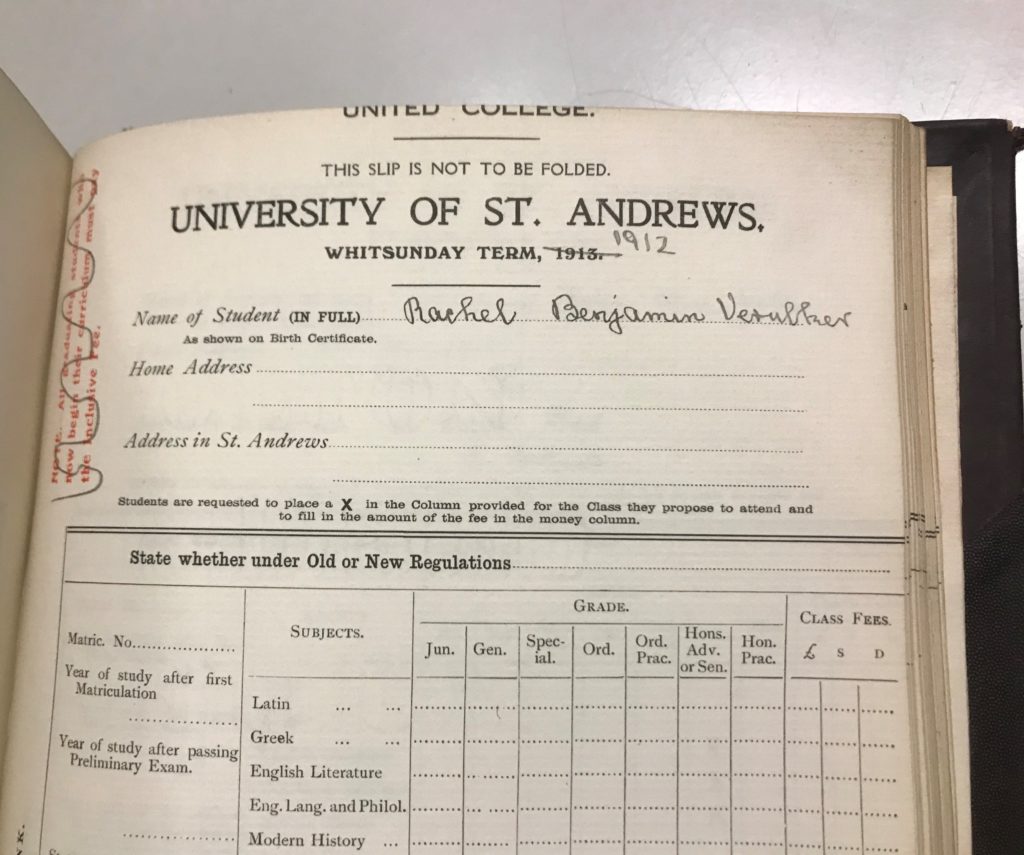
Our first step in the research process is always to confirm date of graduation, and we quickly established that Rachel was awarded the degree of MA on 13/10/1922. From there, we move to the matriculation slips and work backwards to obtain start date and other information about classes taken etc. From Rachel’s slips, we confirmed that she was born on 24/03/1878, that her home address was ‘Eden High School for Girls, Dacca, Bengal’, and her term time address was women’s hall of residence, University Hall. But the other sections of the slips, which should contain information about schooling and previous qualifications, were entirely blank, which is highly unusual. Her final slip stated that she was in her 6th year of studies – surprising, as the Ordinary MA degree is usually awarded after 3 years. Working backwards, we found slips going back to 1919-20, when she was in her 4th year of studies, but no slip for the period 1918-19. The slips didn’t pick up again until 1913-14, revealing a gap during the war years (1914-15 to 1918-19), before continuing back to her first year of study, in 1911-12. So Rachel’s attendance at the University in fact spanned over a decade.
While it was not unusual for students to suspend their studies during WWI, Rachel’s blank matriculation slips, and duration of study (six full years) were atypical. Although it can be frustratingly difficult to find explanations for anomalies in the matriculation records recorded elsewhere in the archive, the minutes of the Senatus Academicus (UYUY452) – the supreme academic body of the University – occasionally discuss the circumstances of named individuals. The index revealed a couple of sections dedicated to ‘R.B. Verulkar’, the first from a meeting dated 18/05/1920 stating that she had returned to India in 1914, and during the war had been unable to obtain a passport that would allow her to return to Scotland. She had therefore requested permission to amend her exam schedule.
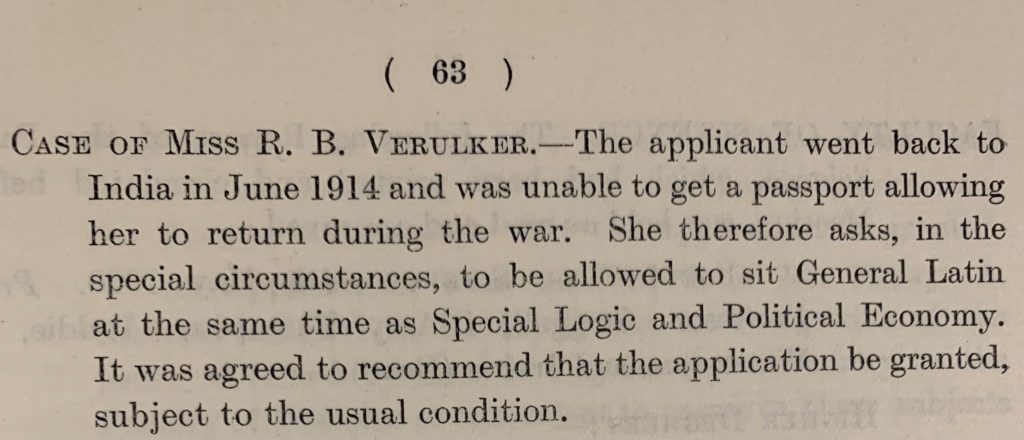
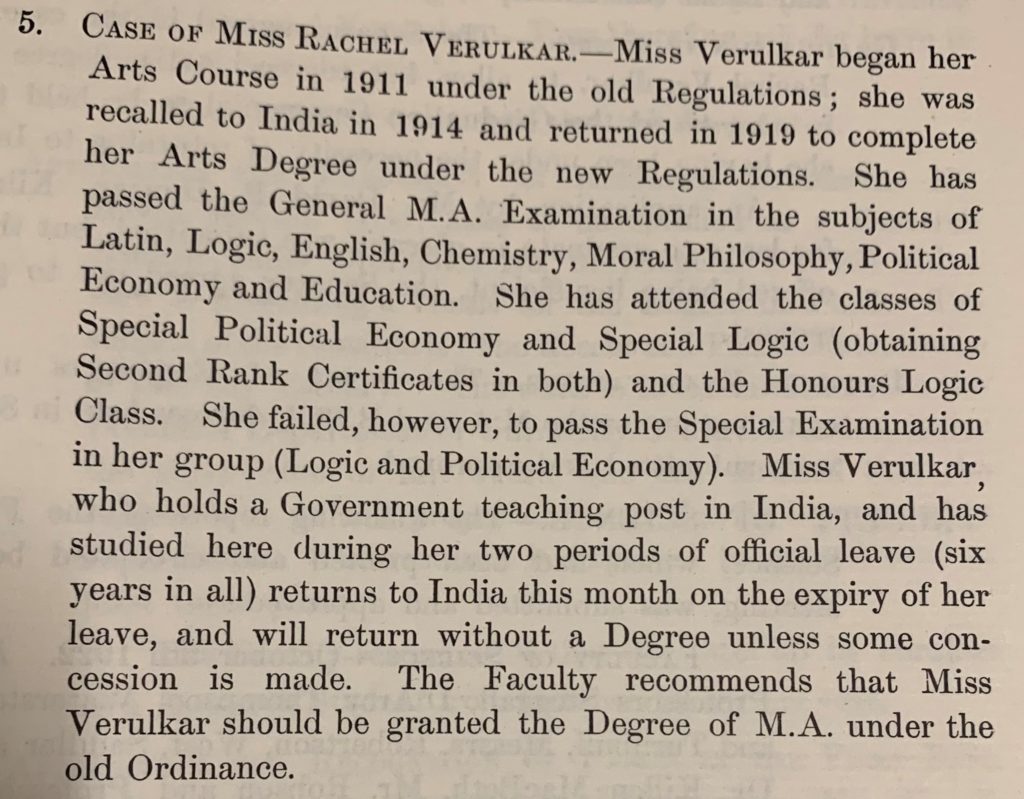
The second, from a meeting dated 13/10/1922, established that Rachel held a Government teaching post in India, and had in fact studied for her degree at St Andrews during two periods of official leave. Having had to return to India again to resume her post, she was granted permission to graduate from St Andrews in absentia.

Having confirmed the details of Rachel’s studies, we could move on to the second part of the enquiry: whether Rachel could have been our first female Indian student. Female ‘firsts’ can be easier to ascertain than those of their male counterparts, because women were not admitted to study at the University until 500 years after its foundation, therefore providing a much narrower timeframe within which to search. And because the first female students did not begin their studies until the late 19th century, the University records we hold are much more comprehensive than those of earlier time periods. The University Calendars (StA LF1104.C2), published annually from 1865 onwards, list the names of graduates and where they are from, meaning that it was possible to check by year for graduates from India. As the first female student graduated in 1895, we had a 30-year window in which to look for Indian graduates. There were in fact several who graduated in this intervening period, and while their forenames indicate that they were male, it is noteworthy that sex was not indicated on matriculation slips at that time. So although it is difficult to say with complete certainty, the records do indicate that Rachel may have been our earliest female Indian student.

While our University records do provide an interesting snapshot into the academic lives of our historical alumni, personal sources which add colour to their St Andrews story are a much rarer find. In this case, we were lucky enough to unearth some letters to the University from Rachel, and an acquaintance of hers at the Eden High School for Girls. As the sister of a former St Andrews student, Dagmar writes on Rachel’s behalf to request a place in University Hall, explaining:
‘She wants very much to come to St Andrews next October, & wants to live at the University Hall, so as to have the college life. Will you have a vacancy for her? […] She wants to read for her MA, but is not at all sure that the money she has would last for more than two years. I think that she is clever beyond the ordinary & also is strong and very keen on work.’
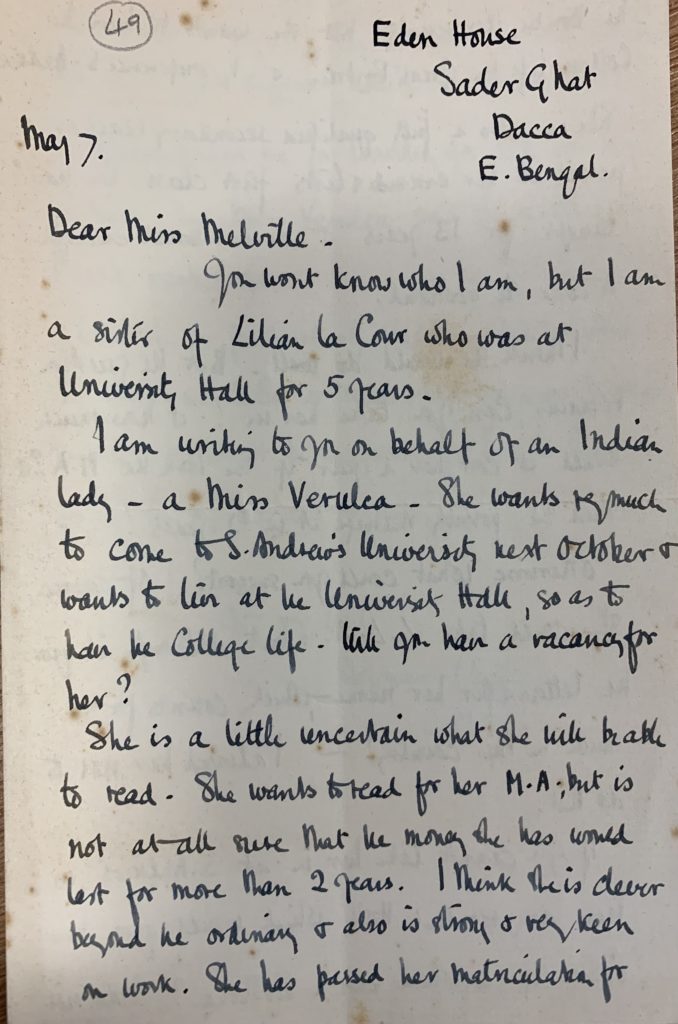
In her letter, Dagmar introduces herself as the sister of former St Andrews student Lilian la Cour (who, we found, graduated with Honours in Maths in 1903). She signs off with ‘Dagmar (sister), OMSE’. OMSE stands for Oxford Mission Sisterhood of the Epiphany and is an Anglican order.
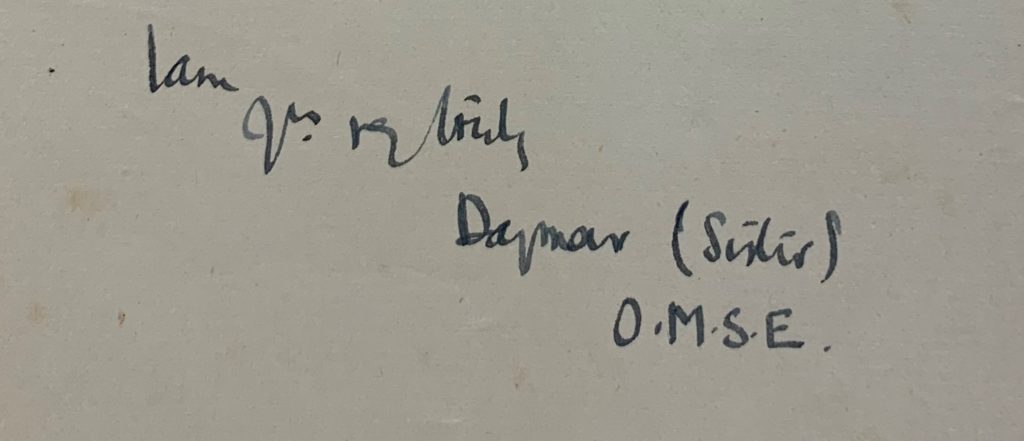
Rachel herself writes that she was originally wanting to take the LLA examination:
‘Madam, I am desirous to study for the LLA examination of the University of St Andrews […] I am an Indian Jewish lady & have been in Government service for fourteen years. I am entitled to a year’s furlough, which I wish to come and spend in study at the Hall, if you have no objection’.
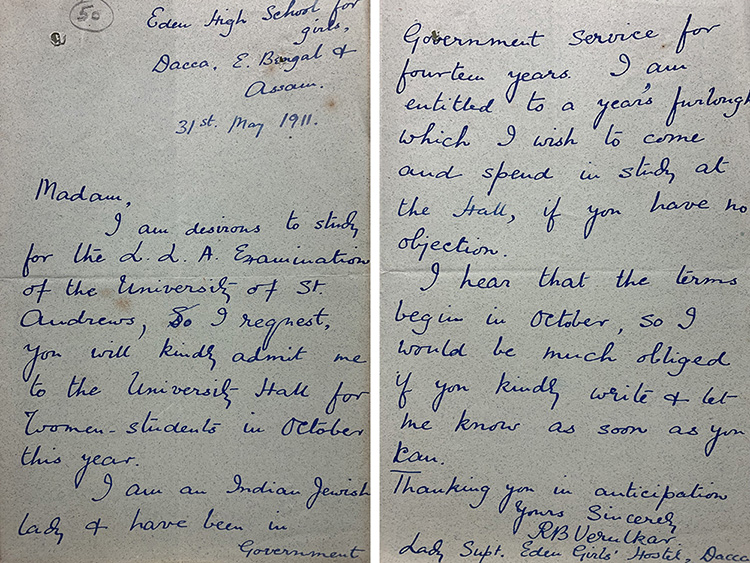
The final letter from Dagmar confirms that Rachel has been accepted at University Hall, and discusses travel arrangements, and the practicalities of life in Scotland!
‘The steamer that comes in next will not land her at Genoa until Oct 2nd & I fear that will be too late as she must have a day or two in Edinburgh or London to buy some warm clothing’.
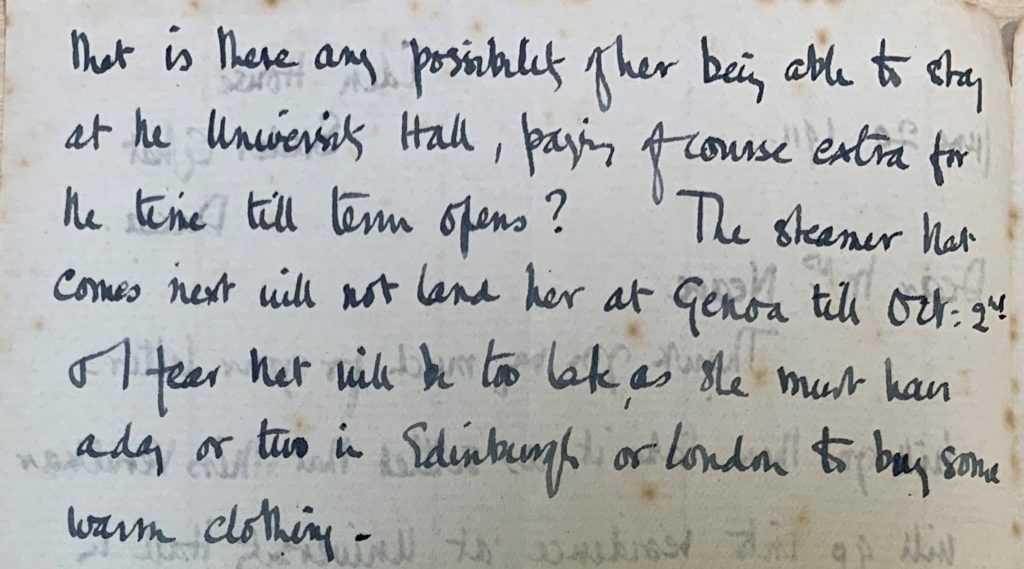
Of course, the icing on the cake for any enquiry of this type is to find a photograph of the student. We hold a series of group photographs taken of residents at University Hall, and as Rachel attended for six years, we were hopeful that we would have a photograph from one of the semesters when she was a resident. A search of our online photographic catalogue produced a group photo from 1912, and Rachel’s great-nephew was able to confirm that she was present in photograph, seated at the far right of the second row.
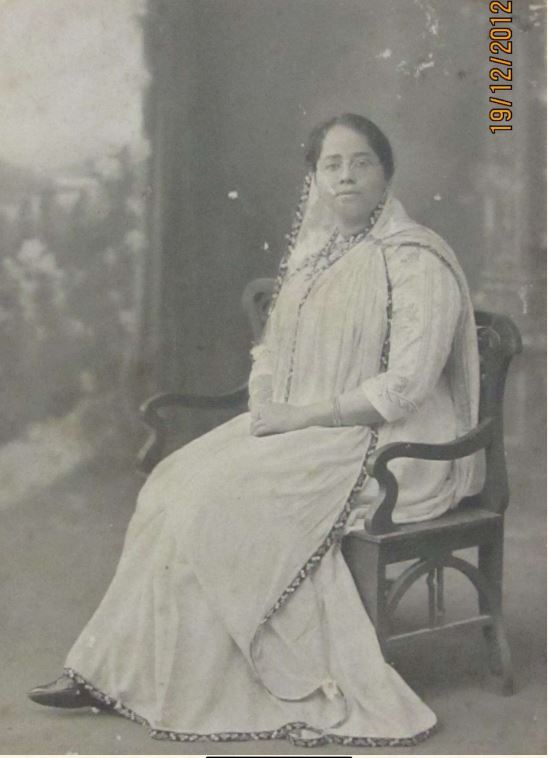
Being able to exchange this type of information with the relatives of past alumni is such a joy, especially when are able to learn about what they went on to achieve after their studies. It was fascinating to discover that Rachel continued to make historical ‘firsts’, after returning to work as a teacher in her former school in Dacca (now Dahka), and becoming headmistress there. In 1926, she hosted a visit to the school from Nobel Laureate poet Rabindranath Tagore, and during her career introduced school uniforms for students in India. In 1928 she returned to her hometown, Pune, to become Principal of Huzurpaga, a Jewish School for girls and the oldest Indian-run high school for girls in India.
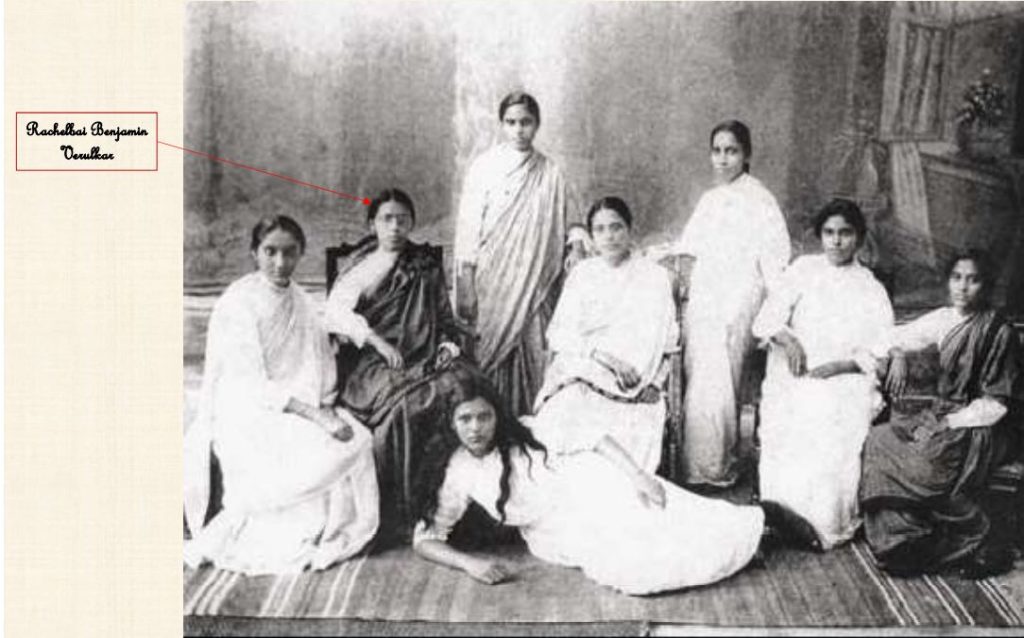
She passed away in 1938, at the age of 60, having devoted her life to the education of women.
We are grateful to the family of Rachel Benjamin Verulkar for their permission to share this story.
Julie Greenhill
Senior Library Assistant (Special Collections)